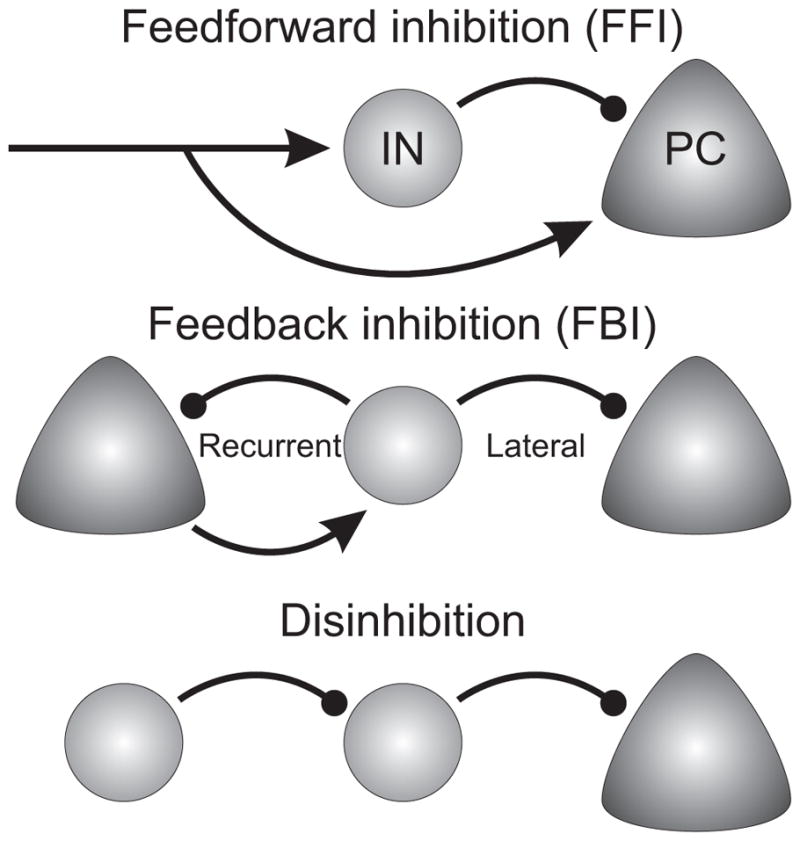Figure 4. Circuit motifs involving INs.

In feedforward inhibition (top), an external source makes excitatory synapses (arrows) onto both local principal cells (PC) and interneurons (IN). Interneurons in turn provide inhibitory inputs (black dot) to PCs. Feedback inhibition (middle) occurs when the source of excitation is local. INs can in turn make inhibitory synapses on the local PCs that provided the excitation (recurrent) or other neighboring PCs that did not participate in the recruitment of the IN (lateral). In disinhibition (bottom), the principal target of an IN is another interneuron, preventing it from inhibiting PCs.
